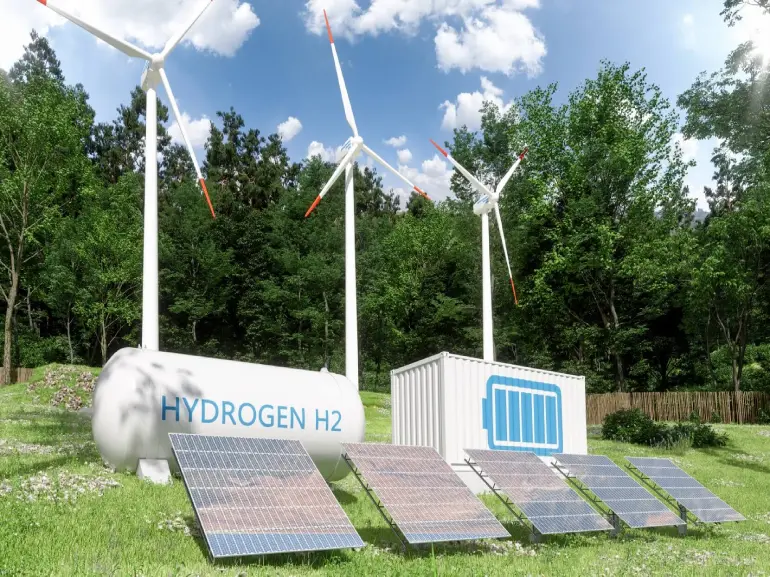- Steel mills can boost operations and productivity by adopting AI, machine learning, and robotics.
- Implementing cloud-based solutions can enhance data storage, analysis, and operational visibility.
- Sustainability practices like energy-efficient systems and recycling programs can lower environmental impact.
- Monitoring production processes and adjusting them improves efficiency and reduces costs and waste.
- Investing in alternative energy sources like wind and solar power helps minimize the carbon footprint.
Steel mills are complex and massive industrial structures that require innovative approaches to maximize their production capabilities. The conventional techniques used for decades can no longer meet the growing demand for high-quality and cost-effective production processes.
With the evolution of technologies and automation, steel mill owners must look beyond traditional practices and implement innovative approaches to performing their operations. This blog post will explore a few innovative approaches to elevate steel mill operations and forge greater productivity.
These approaches can increase production efficiency, enhance product quality, reduce production costs, minimize waste, and improve overall operational performance.

Implementing Artificial Intelligence
Steel mills can now leverage artificial intelligence to automate production processes, improve efficiency, and reduce costs. AI technologies can optimize production workflows and ensure machinery and equipment operate smoothly while detecting and preventing malfunctions.
Monitor and Analyze Data
AI systems also help monitor and analyze data to identify potential operational issues, allowing for proactive maintenance and repair, ultimately leading to better product quality and increased productivity.
Predictive Maintenance
One of the most exciting possibilities arising from the use of artificial intelligence in steel mills is predictive maintenance. By leveraging AI-based monitoring systems, mills can track key performance indicators and receive real-time notifications when there’s a sign of abnormality in any machinery or equipment. To further reduce work stoppages, the steel mill should use top-quality mill liners. These liners help to protect equipment from corrosion and wear.
Utilizing Machine Learning
Machine learning algorithms can help steel mills analyze vast volumes of production data and derive meaningful insights. By understanding patterns and anomalies in their operations, steel mill operators can identify potential bottlenecks and inefficiencies and take appropriate measures to address them proactively. Machine learning can also optimize product quality by ensuring that products meet or exceed customer expectations.
Waste Reduction
Machine learning can also be used to reduce waste in operations. By recognizing trends in production data, mills can adjust their processes and optimize them to minimize scrap and other forms of waste.
Incorporating Robotics
Using robotics in steel mills has revolutionized operations by providing greater efficiency, quality, and safety. Robots can perform repetitive and hazardous tasks more efficiently and precisely than human labor. Robotic systems, especially those equipped with AI and Machine Learning, can be programmed to learn and adapt to new tasks, continuously improving productivity while reducing operational costs.
Extreme Conditions
Robots can work in extreme conditions that would otherwise be too hazardous for human operators, such as high temperatures and toxic fumes. By automating the most tedious or dangerous tasks, workers can remain safe while optimizing productivity. Additionally, robot automation eliminates manual, labor-intensive operations and provides consistent results regardless of operator fatigue or skill level.
Implementing Cloud-Based Solutions
Cloud-based solutions can help steel mills centralize their data storage and process information in real time, providing greater operational visibility, collaboration, and analysis. Cloud-based solutions can also help streamline critical processes such as supply chain management, quality control, and resource planning. By leveraging cloud-based solutions, steel mills can improve operational efficiency and reduce costs.
Analytical Capabilities
Advanced analytics capabilities are also available through cloud-based solutions to help identify patterns in customer behavior, detect emerging trends, and target new markets. This helps steel mills stay ahead of the competition and capitalize on growth opportunities.

Adopting Sustainable Practices
Sustainable practices can help steel mills reduce their environmental impact while providing long-term economic benefits. By implementing sustainable practices such as energy-efficient systems, recycling, and waste reduction programs, steel mills can save on energy and resource costs while promoting a more sustainable future for the industry. Additionally, steel mills can reduce their carbon footprint by investing in alternative energy sources such as wind and solar power.
Assess and Adjust
By taking the time to assess and adjust production processes, steel mills can also help minimize environmental damage associated with traditional practices. For example, improving the quality of raw materials used in steel production can reduce air pollution from smokestack emissions. Similarly, adopting more efficient production processes can reduce water consumption and the amount of hazardous by-products created during the manufacturing process.
Steel mills must consider adopting innovative approaches to improve productivity, increase efficiency, and reduce operational costs. By incorporating technologies such as AI, machine learning, robotics, and cloud-based solutions, they can optimize workflows and reduce waste effectively. Steel mill owners and entrepreneurs must remain competitive by adopting sustainable practices and staying ahead of the curve in the evolution of production processes. Ultimately, elevating steel mill operations and forging greater productivity is key to unlocking long-term success in the industry.


